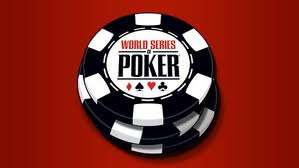ONE DROP High Rollers Continues Trend of Six-Figure Events
 Last week Caesars Interactive Entertainment released the schedule for the 2013 World Series of Poker in Las Vegas. Most of the immediate reaction centered on the Ladies Event, which for the first time ever sports a gender-based price tag. The tournament that caught my eye, however, was Event No. 47, $111,111 ONE DROP High Rollers NLHE. It represents what I consider to be an unfortunate trend in tournament poker towards bigger and bigger buy-ins.
Last week Caesars Interactive Entertainment released the schedule for the 2013 World Series of Poker in Las Vegas. Most of the immediate reaction centered on the Ladies Event, which for the first time ever sports a gender-based price tag. The tournament that caught my eye, however, was Event No. 47, $111,111 ONE DROP High Rollers NLHE. It represents what I consider to be an unfortunate trend in tournament poker towards bigger and bigger buy-ins.
Back in 2003, when the WPT first moved off the “gold standard” of $10,000 Main Events with its $25,000 WPT Championship, the buy-in felt incredibly steep to poker players and observers alike. Only 111 players entered the event that year. Over the years mid-level and amateur players have seen the folly of investing $25,000 to play against a world-class field. Despite reaching a high-water mark of 639 entrants in 2007, last year’s $25,000 WPT Championship drew only 152 players. Many other $25,000 events on the tournament calendar draw similar numbers: a relatively small field of high-caliber players.
For some more historical perspective, consider the origins of the WSOP. The first $10,000 freezeout Main Event was held in 1972, at a time when the median U.S. household income was $8,485. Adjusting for inflation to 2012 dollars, those amounts are $54,000 and $46,000, respectively. So if we were to simply inflation-adjust tournament buy-ins, the best players in the world would play in events with $50,000 price tags, like the Poker Players Championship at the WSOP.
Yet instead of seeing tournaments capping out at $50,000, there are multiple entries on the calendar each year at buy-ins ranging from $100,000 to $250,000 as tournament series and tour operators try to out-do each other in order to capture the outsized level of interest these events draw within the poker community. The WSOP, the WPT, the PCA, the Aussie Millions, and the EPT all have events in excess of $100,000, some of which allow for re-entry. There are also a few random “one-off” events each year like last year’s $1 million Big One for ONE DROP.
There are three significant problems with this approach.
First, tournament organizers are running the risk of decreasing mainstream interest in tournament poker. Poker has always had an image problem. That’s one of the things that has made regulation difficult in places like the USA. By “degenning” things up with $100k or $250k or $1 million tournaments (some with hideously bad structures), the “common man” who makes $50,000 a year is going to have difficulty relating. At that point, poker loses its spectacle appeal and becomes an incredibly grotesque form of gambling – exactly the type of image the industry doesn’t need as governments consider regulation of the online variant of the game.
In addition, each massive buy-in poker tournament creates a situation that could lead to a tremendous loss of money from the poker economy. Super high rollers events aren’t fed by an unending stream of online qualifiers. These events are played mainly by poker players who are able to stomach the buy-in on their own or who sell off enough action that their exposure is minimized, with a few ultra-wealthy amateurs thrown into the mix. There is a very real risk that whoever wins the event won’t put most (or any) of the money back into the poker economy.
That ties directly to my last concern, which is the risk of ruin for high-stakes players. I’m no nanny-state liberal who believes in telling people what they can and can’t do with their money. Players can take whatever risks they want as long as they’re willing to suffer the consequences. But how many of these players have the $8 to $10 million bankroll that regularly playing $100k (or bigger) events requires? It’s not hard to imagine a great tournament player, with a 20% ITM rate, going 0 for the year in high-roller events and lopping seven figures off his or her bankroll. In fact, it’s only a matter of time before it happens.
“Ah,” you say, “but most players piece out their action.” If that’s the case, then why aren’t we just running $25,000 to $50,000 events? If so few players are willing to tolerate the risk of playing 100% of themselves in six-figure events, doesn’t that suggest that the buy-ins are too high?
We’ve got at least another 20 years before we need to worry about $100k events, never mind $250k or $1 million events. Let’s end the arms race and restore the buy-ins of high-rollers events to a level that’s slightly less ruinous. For all of us.


















COMMENTS